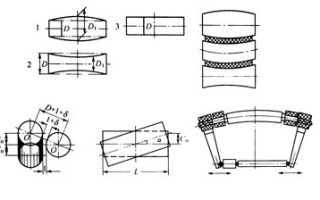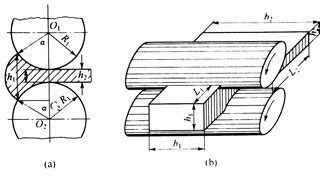Preparations that must be completed before calendering include: hot-melting and rubber-feeding of rubber materials, dipping and drying of textiles, and heat-stretching of chemical fiber cords. These processes can be carried out independently or in combination with the calendering process.
Rubber material heating and rubber supply
After long-term parking, the rubber compound has lost its thermoplastic fluidity. It must be heated and softened to reduce the viscosity and restore its necessary thermoplastic fluidity. It can also supplement the mixing and improve the plasticity of the rubber compound. . The hot-melting and supplying of the rubber is generally carried out in an open-type rubber mixer, and can also be carried out by a pin-type cold feed screw extruder or a screw-type continuous mixer. At present, the first two are the most commonly used, but the supplementary mixing of the cold feed screw squeezing machine is small, mainly for preheating and feeding.
The hot rolling mill is usually carried out in three steps: the first step, roughing (also known as crushing, breaking glue), the lower roller temperature makes the rubber softer; the second step, the refining, the roller temperature is higher, To obtain the necessary thermoplasticity and to supplement the mixing effect: The third step is to supply the glue, and the refined rubber is preferably cut by a special open mill to cut film of a certain section size. The calender is continuously supplied with glue, and in special cases, it can be directly supplied by the fine machine. The general conditions for hot refining are shown in the table below.
Rubber heat treatment process conditions
| Project | Roll distance / mm | Roller temperature °C | operating |
| Rough | 7-9 | 40-45 | 7-8 times |
| Refining | 7-8 | 60-80 | 6-7 times |
In order to make the rubber material warm and soften rapidly, the speed of the roller is relatively large, generally between 1.17 and 1.28. The plasticity requirements of various calendered rubber materials are shown in Table 11-2. It can be seen that the rubber compound used for textile rubbing can have higher molding requirements, so as to increase the penetration and bonding effect of the rubber compound on the textile: the plasticity requirement of the tablet and the pressed rubber is lower, in order to increase the glue. The stiffness of the semi-finished product is prevented from being deformed by semi-crystallization; the plasticity of the rubber material for textile applicator is between the above two.
In order to maintain the plasticity and temperature stability of the rubber compound, the amount of glue in the hot-melting capacity and the roller should be kept constant; in order to prevent the rubber material from staying on the machine for too long, it should be cut and tempered frequently.


